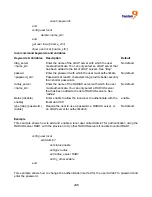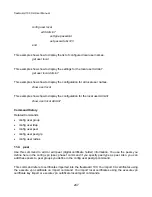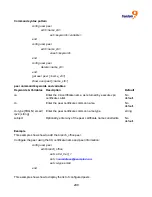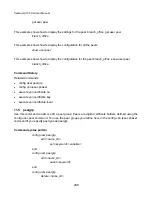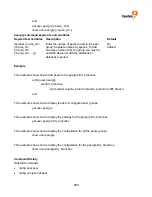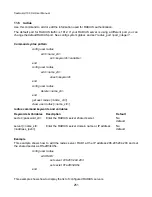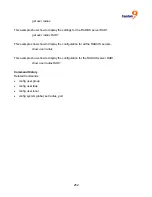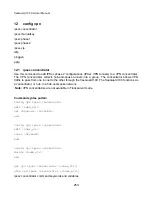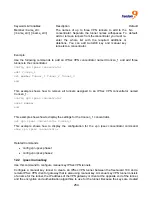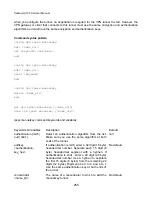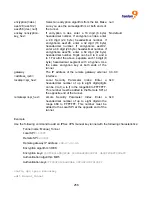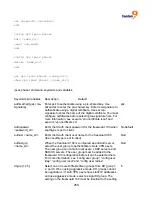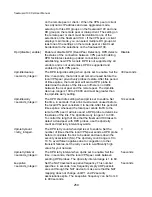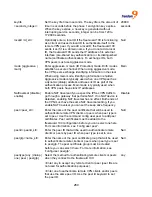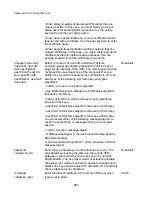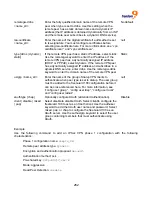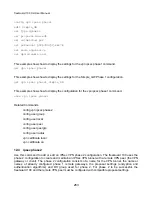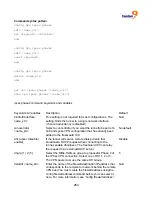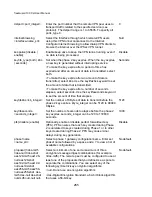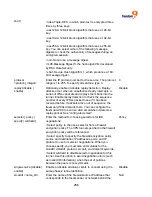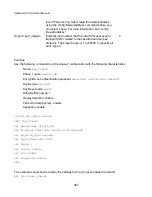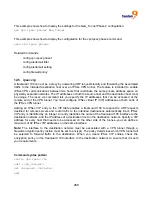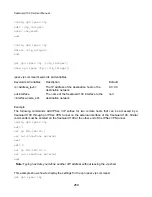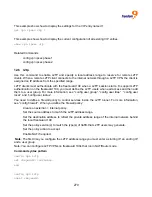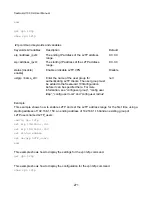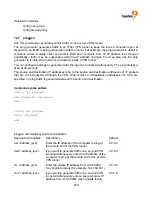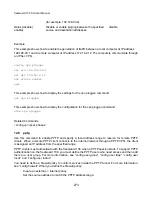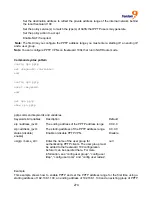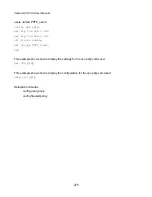
260
keylife
<seconds_integer>
Set the key life time in seconds. The key life is the amount of
time in seconds before the phase 1 encryption key expires.
When the key expires, a new key is generated without
interrupting service. seconds_integer can be from 120 to
172,800 seconds.
28800
seconds
localid <id_str>
Optionally enter a local ID if the freeGuard 100 is functioning
as a client and uses its local ID to authenticate itself to the
remote VPN peer. If you add a local ID, the freeGuard 100
sends it as if it is a domain name. If you do not add a local
ID, the freeGuard 100 sends the IP address of its external
interface (pre-shared key authentication) or its distinguished
name (certificate authentication). To exchange IDs, both
VPN peers must use Aggressive mode.
Null
mode {aggressive |
main}
Enter aggressive or main (ID Protection) mode. Both modes
establish a secure channel. When using aggressive mode,
the VPN peers exchange identifying information in the clear.
When using main mode, identifying information is hidden.
Aggressive mode is typically used when one VPN peer has
a dynamic (dialup) address and uses its ID as part of the
authentication process. Main mode is typically used when
both VPN peers have static IP addresses.
Main
Nattraversal {disable |
enable}
Enable NAT traversal if you expect the IPSec VPN traffic to
go through a gateway that performs NAT. If no NAT device is
detected, enabling NAT traversal has no effect. Both ends of
the VPN must have the same NAT traversal setting. If you
enable NAT traversal you can set the keep alive frequency.
Disable
peer <peer_str>
Enter the name of the peer certificate that will be used to
authenticate remote VPN clients or peers when peer type is
set to peer. Use the command config user peer to add peer
certificates. Peer certificates must be added to the
freeGuard 100 configuration before you can select one here.
For more information, see “config user peer”.
Null
peerid <peerid_str>
Enter the peer ID that will be used to authenticate remote
clients or peers by peer ID when peer type is set to one.
Null
peergrp <name_str>
Enter the name of the peer certificate group that will be used
to authenticate remote clients or peers when peer type is set
to peergrp. The peer certificate group must be created
before you can select it here. For more information, see
“config user peergrp”.
Null
peertype {any | dialup |
one | peer | peergrp}
Select the method for authenticating remote clients or peers
when they connect to the freeGuard 100:
• Enter any to accept any remote client or peer (peer IDs are
not used for authentication purposes).
• Enter one to authenticate remote VPN clients and/or peers
that use the same peer ID. Use the peer id keyword to set
the peer ID.
any
Содержание freeGuard 100
Страница 1: ...freeGuard 100 UTM Firewall CLI USER S MANUAL P N F0025000 Rev 1 1...
Страница 3: ......
Страница 7: ......
Страница 87: ...80 The config ips anomaly command has 1 subcommand config limit...
Страница 183: ...176...
Страница 309: ...302 100 from a TFTP server with the address 192 168 21 54 set vpn certificates local import branch_cert 192 168 21 54...

